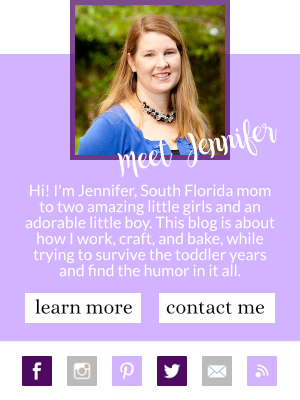 Chances are, if you have kids, you also have toys. Blocks, legos, dolls, stuffed animals…they’re easy to accumulate and often it seems like they’re staging a takeover of your house. Sure your kids love them, but toys also have a way of bringing dirt and germs into your house. And those germs can get your kids sick. So when it comes to toys (especially the ones that they play with the most), cleaning is key. Wondering how to clean your child’s toys safely and effectively? Here’s how I do it:
Chances are, if you have kids, you also have toys. Blocks, legos, dolls, stuffed animals…they’re easy to accumulate and often it seems like they’re staging a takeover of your house. Sure your kids love them, but toys also have a way of bringing dirt and germs into your house. And those germs can get your kids sick. So when it comes to toys (especially the ones that they play with the most), cleaning is key. Wondering how to clean your child’s toys safely and effectively? Here’s how I do it:
Plastic Toys without Batteries & Rubber Toys (including teething rings)
For these types of toys your dishwasher will become your best friend! Running plastic and rubber toys through the dishwasher without detergent on the hottest cycle you have will sanitize them. If there is actual dirt on them scrub them down before putting them in the dishwasher. This cleaning process requires minimal effort and is safe for your child’s toys without chemicals.
Plastic Toys with Batteries
Toys that have batteries obviously cannot be run through the dishwasher, but you can still give them a good cleaning to get the germs off. Before starting, remove the batteries and place them in a safe dry spot. Many opt to use bleach, with a safe amount being one teaspoon of bleach to one gallon of water. If you are okay with that route, it’s a fairly safe way to clean toys, just be sure that you are rinsing them well after wards. Bleach breaks up very quickly after use, it’s rare that your child would come in contact with the chemical from a toy being cleaned with it in the proper amounts.
For those who do not want to use chemicals, you can also choose to use hot soapy water, using the same detergent you would use to clean baby bottles and cups. In all reality, you really don’t need any sort of cleansing element, hot soapy water with a good sponge will do the trick.
If battery corrosion appears in your child’s toy, you can save the toy without harm. After battery removal, using a paste of baking soda and water, rub a q-tip over the area that has the corrosion and let it sit for a while. The corrosion should be neutralized and you can then wipe it with a damp cloth. Let the toy dry completely before putting in new batteries.
Plush Toys
Plush toys can be difficult to clean. Most of them can be put in the washing machine, but drying is the fun part! Your child’s favorite fluffy teddy bear will need to air dry if you don’t want it to lose its fluff.
Those that are machine washable should be washed in cold water, and stains should be pretreated before washing. Do not put them in the dryer, but rather towel dry and then let them air dry (The air fluff setting available on some dryers will work for this as well, just no heat.). If it’s a fluffy toy, brush it out as it dries to maintain its fluffiness.
Wooden Toys
When cleaning wooden toys, break them up into 2 groups – finished and unfinished. Finished toys have a stain, lacquer, and/or paint applied, whereas unfinished toys do not. While both of these types of wooden toys should be cleaned regularly, do not soak or submerge them in water for a long period of time as it can cause them to swell.
To clean unfinished toys, simply wipe clean with a damp cloth or sponge and let dry. For best results, clean unfinished toys after they’ve been used, so as not to allow dirt to build up. If you let dirt build up on these types of toys it can be very difficult to remove.
When cleaning finished wood toys, use a little natural, nonabrasive soap and water. Once cleaned, wipe with a dry cloth and allowed to dry completely before use. To remove crayon or stains from finished wood toys or furniture, rinse with water and vinegar. Repeat if necessary.

